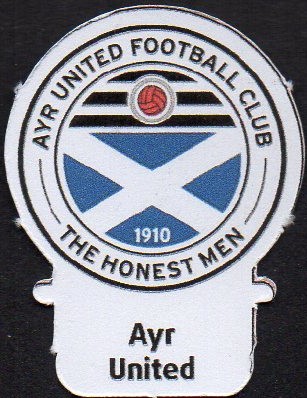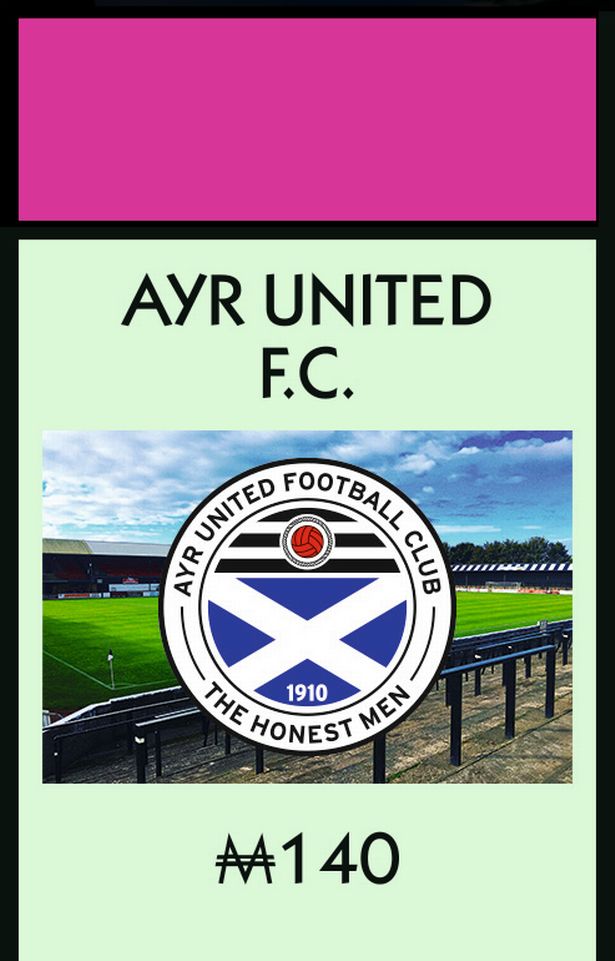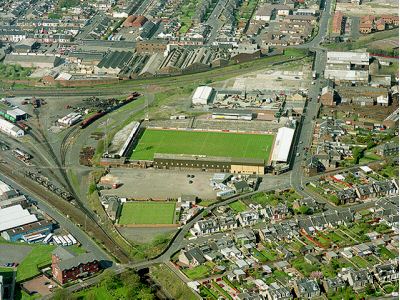







 I first came across Subbuteo in the mid-60s and my first Ayr United team was in the, by then, older versions of celluloid men although I quickly progressed to the ‘heavyweight’ figures in the late 1960s
I first came across Subbuteo in the mid-60s and my first Ayr United team was in the, by then, older versions of celluloid men although I quickly progressed to the ‘heavyweight’ figures in the late 1960s
Subbuteo is a set of board games simulating team sports such as Cricket and Rugby but is most closely associated with the football, which for many years was marketed as 'the replica of Association Football'. The ‘Subbuteo' name is derived from the Latin Falco Subbuteo, a bird of prey commonly known as the Eurasian Hobby, after a trademark was not granted to its creator Peter Adolph to call the game The Hobby.
The availability of Subbuteo was first announced in the August 1946 edition of The Boy's Own Paper. The advert was vague and didn’t provide any detail about what was actually on offer. The same month Peter Adolph lodged a patent application for the game. Once orders started to pour in Adolph set about converting his patent idea into a deliverable product.
The first Subbuteo sets consisted of goals made with wire and paper nets, a cellulose acetate ball, cardboard playing figures in two basic kits (red shirts with white shorts, and blue shirts with white shorts) and bases made from buttons weighed down with lead washers.
No pitch was provided: instead, the purchaser was given instructions on how to mark out (with chalk, provided) a playing area onto a blanket (an old army blanket was recommended).
The first sets were eventually available about 6 months after the original advertisement appeared. An early innovation was to replace the early cardboard figures with a 2-D celluloid figure, known to collectors as ‘flats'.
 Early production of Subbuteo was centred near Tunbridge Wells, in Kent. The early years of Subbuteo were marked by fierce rivalry with 'Newfooty', a similar game that had been invented in the late 1920s by William Keeling of Liverpool. As a means of differentiating his product, in 1961 Adolph introduced a three dimensional handpainted plastic figure into the range. After several design modifications, this figure evolved by 1967 into the classic ‘heavyweight' figure.
Early production of Subbuteo was centred near Tunbridge Wells, in Kent. The early years of Subbuteo were marked by fierce rivalry with 'Newfooty', a similar game that had been invented in the late 1920s by William Keeling of Liverpool. As a means of differentiating his product, in 1961 Adolph introduced a three dimensional handpainted plastic figure into the range. After several design modifications, this figure evolved by 1967 into the classic ‘heavyweight' figure.
There were several further evolutions of figure design. In 1978 the 'zombie' figure was introduced to facilitate the machine painting of figures. After much negative feedback, the zombie figure was replaced in 1980 by the 'lightweight' figure that continued until the 1990s.
I was surprised to read that the first Subbuteo players were made of card and were available from 1947 when the game was invented. They came as a press out Flat card team squad. You would simply press out the figure and slot into a base. The bases were available separately in various colours to match the team. Waddingtons the company which manufactured the game still had hundreds of these card teams in strips of 11 at their offices in Leeds right up to them selling out to Hasbro the toy giant. The card figures were much loved by players for the delightful style of play they could produce (they are better than heavyweights at spinning, swerving and chipping). For this reason, they continued to be sold alongside the OO scale teams until the early 1970s, and still have a devoted following amongst serious players. 
From 1949 flat celluloid players were introduced and came in a small packet. This was their first type of player that I used when I began playing Subbuteo in a local league in Newton-on-Ayr. The celluloid player was available well into the 60's. Both the Card and Celluloid players were found in the box sets of the 50's.
Waddingtons also had hundreds of these celluloid teams still in their original packs. Some of this stock was given to the Subbuteo Collectors Club. There seem to be at least three variations of base.
The first type and the original have the words ‘Subbuteo’ and the patient number "R.D.851000" printed around the top of the base. There is also a later type without the patient number just the name, and finally, the recent re-issues that seem to be just blank. The bases were produced in 11 different colours and are highly sought after by collectors.
The harder to find colours are: black, old gold, tangerine, yellow, grey and maroon. It is worth noting that the flat figures don't have coloured socks, and sock colours are not consistent in the early OO scale figures either. The sock colours seem to be fixed by the 1970s, when teams were illustrated in Subbuteo catalogues for the first time, and after that date new teams were introduced just for sock trim variations.
 Collector references numbers 1-50 were the first teams produced by Subbuteo and are therefore mostly the colours that English and Scottish club sides were wearing during the 1950s and 1960s.
Collector references numbers 1-50 were the first teams produced by Subbuteo and are therefore mostly the colours that English and Scottish club sides were wearing during the 1950s and 1960s.
The catalogues of the time also made reference to Irish teams, and international country sides. Ayr United was originally Number 10 but later that was diluted to be either Ayr United or West Germany. Ayr United were never represented in their original black and white hoops.
I remember being in a sports shop in Rome in the early 1970s and seeing Subbuteo advertised and there believe it or not was a team box marked ‘Ayr United’. Similar to the set shown here in the picture, It had to be bought!!
The first of the 'OO' scale figures became available in 1961 for a very short time and they had 'V' neck shirts and short sleeves, which of course were how Scottish team strips were seen in those days. The very first 'Continental' style players in 1961 came in white boxes. 
Then came the green boxes with two variations with a white rim. For some reason the first batch of original heavyweight teams that were all made with black shorts - which suited Ayr United.
New box designs appeared in the mid to late 1970s, originally with the green box and a small graphic of a player kicking a ball. Later the box changed ever so slightly to show a much larger footballer graphic. This is the most common of the pre 80's boxes. These boxes didn't seem as sturdy as the earlier versions.
In the 2000s there was a move to much more individualisation and boxes with specific team names on the front.
These new ‘Team Holder Boxes’ came in the colours of your favourite football team with the clubs name on the front and there were nearly 400 different box choices to select from.
Many accessories developed over the years from various sizes of football, goals, to referees and linesman and then to scoreboards and then to football stadiums, floodlights, advertising boards with team names to stands and crowd scenes.